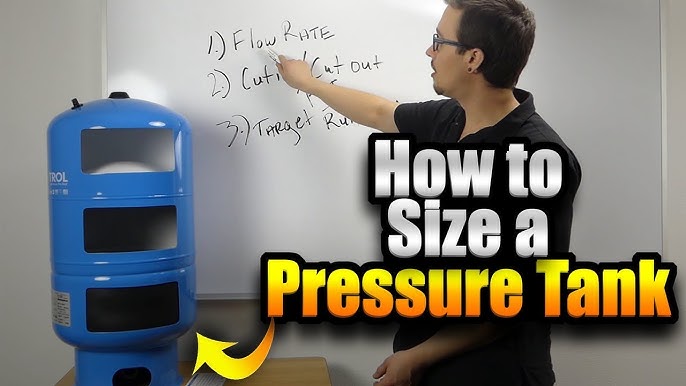Alright, let’s talk about well pressure tanks. I recently had to figure out what size tank I needed for my place, and boy, was it a journey. You see, these tanks are crucial because they help your well pump last longer. They stop it from turning on and off all the time, which can wear it out real quick. Plus, they keep your water pressure steady, which is pretty important for, you know, taking showers and stuff.
So, I started digging around, trying to make sense of all this. The first thing I learned is that you gotta match the tank size to your pump’s capacity. The rule of thumb is to have one gallon of drawdown for each gallon per minute your pump can handle. That way, the pump runs for the right amount of time. For instance, if my pump can push out 10 gallons a minute, I’d need a tank with at least 10 gallons of drawdown.
Then there’s this whole thing about “cut-in” and “cut-out” pressure. Basically, it’s the range of pressure where your pump turns on and off. It’s measured in PSI, which stands for pounds per square inch. I found a rough guide for figuring out the right size tank based on your pump’s flow rate. I’ll lay it out real simple:

- 0-10 GPM: You want 1 gallon of drawdown for each GPM of flow.
- 10-20 GPM: Bump it up to 1.5 gallons of drawdown per GPM.
- 20 GPM and up: Go for 2 gallons of drawdown per GPM.
Now, here’s the kicker: bigger is usually better when it comes to these tanks. A bigger tank means more water stored (that’s the drawdown), which means your pump runs less often. I ended up going with a larger tank than I thought I needed, just to be on the safe side. It’s been working like a charm, and my water pressure’s been rock solid.
Some Extra Thoughts After Installing
After installing the tank, I spent some time observing how it all worked. I noticed that with the larger tank, the pump really did run for longer periods but less frequently. I’d hear it kick on, run for a good stretch, and then shut off for quite a while. It gave me a good feeling, knowing that the pump wasn’t being overworked. Plus, it was kinda satisfying to see the pressure gauge needle stay steady when I turned on the faucet. I even started timing how long it took for the pump to refill the tank after we used a bunch of water, like doing laundry or watering the garden. It became a little game for me, checking to see if everything was running efficiently.















